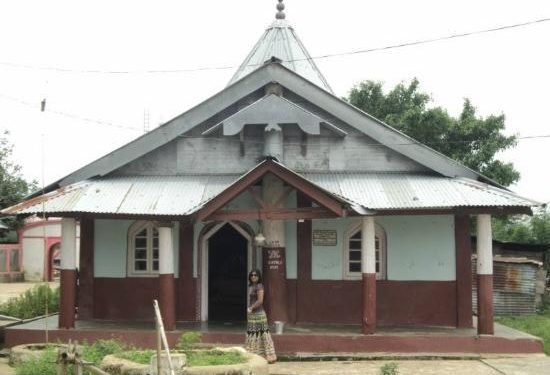Nartiang Durga Temple is a 500-year-old Durga Temple located in the West Jaintia Hills district of Meghalaya, a state in North-Eastern India. Being one of the 52 Shakti Peethas of Hindu Mythology, this temple is one of the holiest sites for devotees of the Shakti sect of Hinduism.
Shrine’s History
Jaintia king Jaso Manik (1606?1641) had married Lakshmi Narayana, the daughter of the Hindu Koch king Nara Narayana. It is believed that it was Lakshmi Narayana who had influenced the Jaintia Royalty to embraceHinduism. King Dhan Manik had made Nartiang the summer capital of the Jaintia Kingdom about 600 years ago. One night, the goddess appeared to him in a dream and informed him of the significance of the place and asked him to build a temple in Her honour. Following this, the Jainteshwari temple in Nartiang was established. The strategic location of the temple and presence of weapons like cannons etc. suggests that the temple must have been part of a fort of the Jaintia Kings.
Legends Associated with This Shrine
Nartiang Devi temple is believed to be aShakti Peetha, one of the most revered shrines ofShaktismbecauseShakti Peethasare holy abodes ofParashakti. The Shakti Peethas have originated fromthe mythology of Daksha yaga and Sati’s self immolationShivacarried the corpse ofSatiDevi and body parts of the corpse fell in the path he wandered. There are 51 Shakti Peeth linking to the 51 alphabets in Sanskrit. Each temple have shrines forShaktiandKalabhairava. The “Shakti” of Nartiang Devi shrine is addressed as “Jayanti” and the “Bhairava” as “Kramadishwar”. It is believed that Sati Devi’s left thigh has fallen here
Architectural Relevance of This Shrine
Hindu temple constructed in unique local tribal style
Shrine’s Map Location and How to Go There
By Road
Nartiang is around 65 kilometres from Shillong
Events Celebrated at This Shrine
The rites at the temple not performed the conventional way as in the plains, but in a unique way, a blend of Hindu and ancientKhasitraditions. The local chieftain or Syiem is considered the chief patron of the temple. Even today, during Durga Puja, the Syiem sacrifices goats in the Goddesss honour. Earlier, human sacrifice was offered at the temple, but the practice had been stopped by the British. The human head used to roll down a tunnel from the sanctum sanctorum to the Myntdu River flowing below. Nowadays, goats and ducks are sacrificed. But what is most interesting is the fact that the goats are made to wear human masks and then sacrificed.Durga Pujais the most important festival of this temple. DuringDurga Puja, a banana plant is dressed up and worshipped as the Goddess. At the end of the four-day festivities, the plant is ceremoniously immersed in the Myntdu River. A gun salute is also given to the Goddess on the occasion.













































